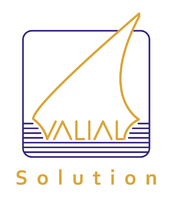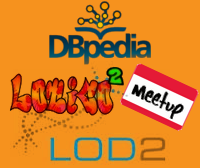
Session, FRI 10:30 - 12:00
Industry Use Cases for Enterprise Linked Data
hosted by eccenca
INGOS World – Scenarios for Risk Mitigation and Cost Reduction in Enterprise IT
In this talk Ingo Klapper presents his industry visions for Linked Data focussing on scenarios for risk mitigation and cost reduction in Enterprise IT. He describes common problems of current IT landscapes and shows how these problems can be overcome by new IT architectures using Linked Data technologies. He gives practical advice how to successfully start Linked Data projects in enterprises and presents several examples from his job experience.
Ingo Klapper
Since 1999 Ingo Klapper has worked as Senior Consultant and Project Manager being responsible for many IT, business process and quality management projects. He gained experience in many industry and service sectors: e.g. eCommerce, eBusiness, media, telecommunication, financial services, logistics & transportation, biotechnology and automotive industry. Ingo strongly believes in the high potential of Linked Data technologies for the Industry 4.0 revolution.
Dynamic Data Layer as a Connection between Structured Data, Information and Processes
Everybody wants a process driven high flexible IT solution landscape, but process driven application and business focused IT need dynamic and harmonized data.
It is precisely this statement, however, which is currently not a living reality in companies. Evolved system landscapes and media discontinuities as well as drawn processes instead of lived processes often stand in the way of realization.
Here is where the VALIAL process portal enters the scene, offering a solution which accepts and integrates the status quo in companies and which guarantees optimal implementation of technical requirements.
In our view, all the basic technologies are already here and available. The corresponding products and product suites built upon them are on the market. The challenges begin when one tries to assemble an optimized product landscape and a mix of systems which not only control and support but which must also be supported. By logically designing the connectivity of the individual components and ensuring the continuity of data flow, IT creates the basis for meeting customer needs.
“Make it simple” for the user. “Make it solid, fault-tolerant and scalable” for IT operations. “Make it reusable” for IT architecture. “Make it combinable” for application development. And “make it flexible” for business requirements.
The concept and implementation of an semantic data layer answers three basic questions:
-
How can I combine, consolidate and harmonize my different data sources
-
How can I connect my data, frontend and services with processes which should be in the ownership of the business line
-
How can I provide the customer all time with the relevant data and information.
About
- VALIAL solution supports the process of change in your enterprise by individual advisory services and IT solutions coordinated with the specific business requirements optimally. As a competent partner we accompany the complete business process integration from the process analysis until the executable IT system solution. We select procedure wise and best practices individual with our customers as of and evaluate the use of acceptable IT products out of our portfolio as well as the solutions of innovative system vendors on the market to obtain the optimal cost use effect for our customers.
- Our offered spectrum covers all phases of the advice, planning, project management, development and products up to process automation solutions in the area of translatory movement, internationalization, portals.
- Our procedure models, and best practices have proved themselves in the practice and support you in the complete project flow of the requirement analysis up to the implementation and business integration.
Anton Kramm
Anton is the CEO and also responsible for Research and development at VALIAL.
In 2002, Anton came to Audi where he at first carried out the construction and operation of the portal platforms as an IT project manager in the area of the web centre. Anton took the management of the unit “ process integration and information management portals” for Audi group in September 2006 before he changed to head of “CoC Websolutions” at 01.07.2007.
Since 01.07.2008 he accepts the responsibility for the divisions BPM, SOA, portals and Websolutions, in VALIAL Solution GmbH.
Linked Data, empowering businesses with SOA 3.0
SOA 3.0 (Service Oriented Architecture) leverages the power hidden inside information systems of organizations. In this talk, current issues are discussed when these information systems use ‘old school’ Enterprise Application Integration or Service Oriented Architecture. Attention will be paid to the following questions: What are the telling signs that current information systems will slow down organizations? What opportunities does Linked Data provide for these organizations? And finally, a Linked Data proposition is presented that creates a win:win:win, for the Linked Data professional, the customers and their ICT departments.
About
Ordina is a Systems Integrator with a long history in Semantics. It has played a leading part in the development of SOA (Service Oriented Architecture) and build the First full scale rule solution in the Netherlands.
Richard Nagelmaekers
Richard Nagelmaeker is an Interoperability Architect working on information systems empowering businesses to achieve their goals.
In his 20 years of ICT experience, he has worked in many roles. From support desk to business architect and from security consultant to technical project manager. Most of his work was in Banking and Telecom Sectors. About 12, of these 20 years were spent in Integration projects. Doing Enterprise Application Integration and Service Oriented Architecture work.
He noticed SOA is not the answer organizations are looking for. When RDF was explained to him about 2 years ago, he understood RDF is capable of overcoming the SOA shortcomings. Since then he has become a strong evangelist of Linked Data in his ambition to empower businesses to realize ICT services quicker than they can write its business case.
Together with other colleagues of Ordina in the Netherlands, he is pushing Linked Data towards government institutes and businesses alike.





